Dombeya rotundifolia
| Botanical Name | Dombeya rotundifolia |
|||||||||||||||||||||
| Family | Malvaceae - The hibiscus and cotton family. |
|||||||||||||||||||||
| Pronunciation | DOM-bee-yuh roe-tun-dih-FOH-lee-uh |
|||||||||||||||||||||
| Common Name(s) |
English: Wild Pear; Bushveld Brid
Afrikaans: Dikbas; Wildepeer; Bruid-van-die-Bosveld; Drolpeer
IsiZulu: iNhliziyonkhulu
Sesotho sa Leboa: mohlabaphala
Tshivenda: Tshiluvhari
Setswana: Motubane
Xitsonga: Nsihaphukuma
|
|||||||||||||||||||||
| Plant Group |
|
|||||||||||||||||||||
| Plant Size |
|
|||||||||||||||||||||
| Position |
|
|||||||||||||||||||||
| General Information |
|
|||||||||||||||||||||
| Specific Information | Dombeya rotundifolia is a small ornamental tree with a rounded crown and dark green, sandpapery leaves. The leaves are roughly hairy and almost circular, hence the name rotundifolia . Between mid-winter and early spring it bursts into a showy display of white, scented, nectar rich flowers which attract a multitude of bees, butterflies and other insects. The flowers turn a tan colour and remain on the tree until the enclosed fruit capsules have ripened. The thick corky brown to black bark makes the tree fire resistant. The common name, White pear, refers to its resemblance to the true pear, but they are not related. The wild pear has been used successfully as a bonsai specimen, developing the corky bark and reduced leaf size after 2 - 3 years. |
|||||||||||||||||||||
| Ad Break | ||||||||||||||||||||||
| Flowers | ||||||||||||||||||||||
| Description | five petaled blossom (a bit like a peach blossom) |
|||||||||||||||||||||
| Season |
|
|||||||||||||||||||||
| Colour |
|
|||||||||||||||||||||
| Growth Rate |
|
|||||||||||||||||||||
| Plant Uses |
|
|||||||||||||||||||||
| Distribution and Habitat | from Kwazulu-Natal, to Mpumalanga, Gauteng, Limpopo, and North West, northwards to Ethiopia, in woodland, wooded grassland and on rocky mountain slopes |
|||||||||||||||||||||
| Planting Suggestions | Keep the ground around the sapling well mulched to assist with water retention above ground. In ideal conditions the wild pear can grow up to 1,5m a year. The old method of digging a deep hole and filling it with soil and compost has resulted in many trees failing to thrive, dying, rotting at the base or worse still, falling over in later years due to poor root development. Refer to the following sites for the best method of planting trees: International Society of Arboriculture: New Tree Planting Tree People: Plant the right way For those of you who have a clay problem try: |
|||||||||||||||||||||
| Medicinal Uses | The tree is used to make a tea to relieve the discomfort of internal ulcers, haemorrhoids or nausea in pregnancy, or to bring on or delay the onset of labour. A love potion is made from the flowers. Strong rope fibre is made from the bark. Fence posts were made from the wood, as it is termite proof. |
|||||||||||||||||||||
| Ad Break | ||||||||||||||||||||||


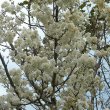
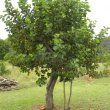
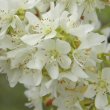
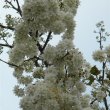
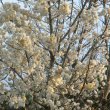


Comments
Spores/Pimples on my Dombeya's Leaves
Please let me know if my Dombeya has a disease because of these spores on its leaves...it's a very young tree and growing rapidly...no other signs of a problem. Can I treat it with anything?
Hi Fiona
Hi Fiona
Would it be possible to send a photo of the leaves or a more detailed description? I am unable to make an accurate diagnosis with so little information.
Kind regards
Lorraine
Best time to plant
Good day
We live in Vanderbijl and would like to plant a Wild pear tree. What time of year would be the best time to plant it?
Regards
Wanja
Planting time
Hi Wanja
If Vanderbijl is as cold in winter as I remember, the best time would probably be at the end of winter or in early spring. This would give the young tree time to adjust to the shock of transplanting and have some sturdy growth by the time winter arrives.
Alternatively, you could plant it immediately but it may need some protection on excessively hot days as well as in winter during frosty periods. For frost protection, use three or four tall sticks tied like a tepee at the top and wrapped with some shade netting, or even a sheet. Netting can be left over the sapling during the day but sheeting or Hessian should be removed during the day and replaced as the evening cools down. For a bit of shade on very hot days, I often use four sticks stuck in the ground around the tree and hang a cardboard box upside-down over the young tree during the hottest part of the day. The sturdiness of the structure you make for protection will depend on the strength of the winds you get.
If you have already bought the tree, I would be tempted to plant it immediately - the sooner it is out of the nursery bag, the sooner it can start to grow. Just remember to take extra care of it in winter.
Kind regards
Lorraine
Hi Lorraine
Hi Lorraine
Thank you for the quick response and advice on both trees.
Will start digging the hole today.:)
An improved method of planting trees
Hi Wanja
Before you plant, read through the planting instructions in this article. Planting trees in a deep hole has been the traditional method for many years but there has been a change in this method which I have tried and had far better results in the long term. The length of the article may look a bit daunting but the content is the best explanation I have found.
https://www.facebook.com/Gardendezine/posts/593472124042800
Kind regards
Lorraine
dombeya - root system
Greetings. We live in pts east and would like to plant a dombeya. We have a fairly small garden and a pool. How far away from the walls and the pool should the dombeya be planted? Also, how aggressive are the roots and how deep do they go? Kindest regards.
Dombeya root system
Hi Melissa
My sincere apologies for not having replied to your query. I am afraid any information after all this time will be of no use to you, but for what it's worth:
Dombeya does not have an aggressive root system but I have no data on the depth of the roots. I would plant about 1.5 to 2 m away from a wall and as far from the pool as possible. The tree is deciduous and loses its leaves during winter. The leaves are big and very hard, and it drops a large quantity of blossoms after flowering. This would play havoc with cleaning and filtering the water of the pool.
Kind regards
Lorraine
Dombeya
How easy is it to grow Dombeya from cuttings. Can you advise please?
Growing Dombeya from cuttings
Hi Greg
My apologies for not having replied to your question sooner.
I have tried propagating from cuttings and had little success - one cutting out of ten rooted. I don't remember what sort of cuttings I used so I would try a variety of new season and second season cuttings, both heeled and tips.
Kind regards
Lorraine
wild pear not flowering fully
Tree is 3 years old
Age at flowering
Hi Theo
Be patient. Mine didn't start flowering until they were five years old. In general, most tree species do not flower until they are five to ten years old. As your tree grows it will flower more profusely.
Kind regards
Lorraine
Discuss this plant
Share knowledge, ask a question or give an experience.